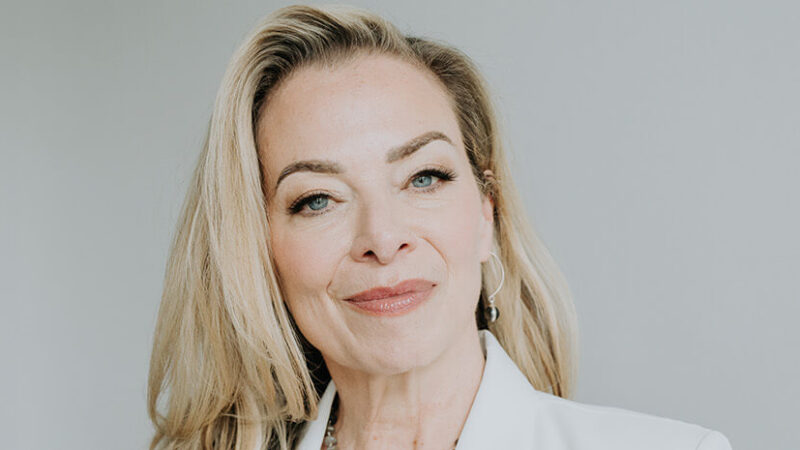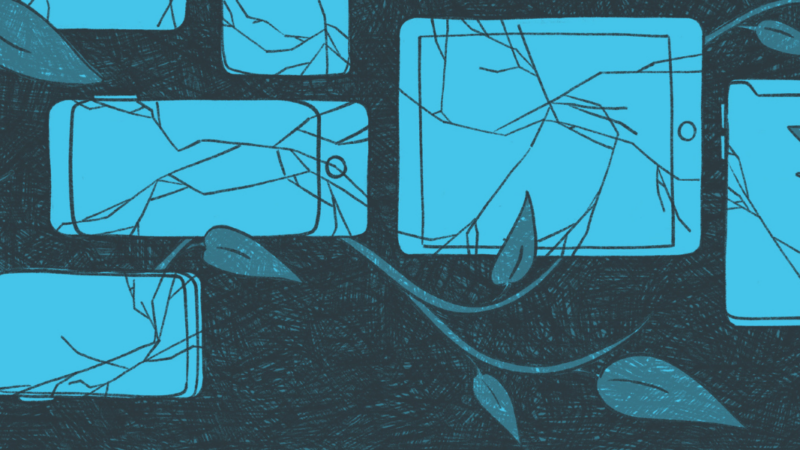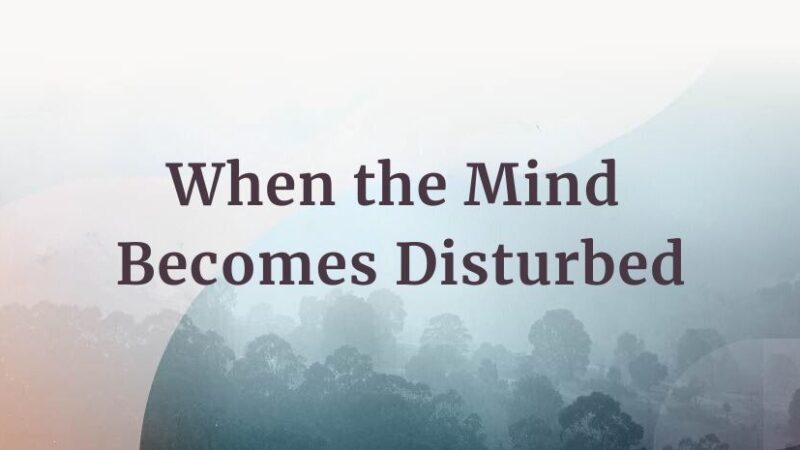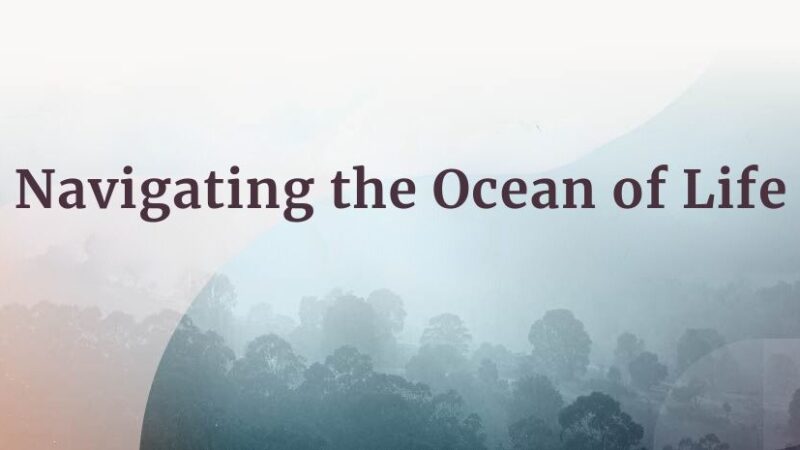-
E117: The Real Work: Letting Go from Within
Michael Singer — October 2, 2025
True spirituality isn’t about mystical experiences or lofty ideals—it’s about honestly facing...
-
Once More: Reflections on Reincarnation and the Gap Between Lives
Tami Simon — September 26, 2025
In this special reflection episode of Insights at the Edge host Tami Simon looks back on her...
-
Honey Tasting Meditation: Build Your Relationship with Sweetness
There is a saying that goes “hurt people hurt people.” I believe this to be true. We have been...
Written by:
Amy Burtaine, Michelle Cassandra Johnson
-
Many Voices, One Journey
The Sounds True Blog
Insights, reflections, and practices from Sounds True teachers, authors, staff, and more. Have a look—to find some inspiration and wisdom for uplifting your day.
Standing Together, and Stepping Up
Written By:
Tami Simon -
The Michael Singer Podcast
Your Highest Intention: Self-Realization
Michael Singer discusses intention—"perhaps the deepest thing we can talk about"—and the path to self-realization.
This Week:
E116: Doing the Best You Can: The Path to Liberation -
Many Voices, One Journey
The Sounds True Blog
Insights, reflections, and practices from Sounds True teachers, authors, staff, and more. Have a look—to find some inspiration and wisdom for uplifting your day.
Take Your Inner Child on Playdates
Written By:
Megan Sherer
600 Podcasts and Counting...
Subscribe to Insights at the Edge to hear all of Tami's interviews (transcripts available, too!), featuring Eckhart Tolle, Caroline Myss, Tara Brach, Jack Kornfield, Adyashanti, and many more.
Most Recent
Terri Cole: High-Functioning Codependency—Breaking t...
High-functioning codependency? That’s not an oxymoron. For psychotherapist Terri Cole, a pattern emerged in her practice that led her to take a deeper look at what we traditionally define as codependent. With her new book, Too Much, Terri introduces high-functioning codependency (or HFC)—illuminating the key traits and behaviors associated with HFC, how it gets passed from generation to generation, and how we can finally break the cycle to reclaim our time, energy, and independence.
Join Sounds True founder Tami Simon in conversation with Terri Cole about: giving unsolicited advice; the habit of auto-accommodating; the FAQ “is this codependent, controlling, or caring?”; the compulsive nature of codependency; when efforts to help backfire; allowing others to experience the consequences of their actions; giving without resentment; how to know if you’re an HFC; taking a resentment inventory; the emotional drivers of HFC; the environmental factors that propagate codependency; self-awareness on the path of recovery; tolerating the discomfort of changing our behaviors; the connection between being easily defensive and HFC; letting go of defensiveness as an HFC; getting back to your “just right”; and more.
Note: This episode originally aired on Sounds True One, where these special episodes of Insights at the Edge are available to watch live on video and with exclusive access to Q&As with our guests. Learn more at join.soundstrue.com.
Learning the Art of Thriving Online
Amelia Knott is an art psychotherapist who specializes in the mental health impacts of hustle culture and social media. In the video below (3:22 minutes), she shares her inspiration behind her written and illustrated workbook, The Art of Thriving Online: Creative Exercises to Help You Stay Grounded and Feel Joy in the World of Social Media and invites you in on the journey of reimagining a healthier relationship with the digital world.
https://soundstrue-ha.s3.amazonaws.com/video/Learning-the-Art-of-Thriving-Online.mp4
You can also read the video transcript below:
It’s been half my life—literally half the years of my life—lifting my chin for pictures, anticipating the critical gaze of a digital audience, offering my presence half-heartedly to the world around me to to draft a clever caption, choose a flattering filter, and watch as my phone tells me if this time my work will be rewarded with worthiness.
Too many nights avoiding myself, letting the blue-light-lullaby of my screen become a substitute for true soothing. It’s been half my life; holding up the mirror of comparison to everyone’s best days and hottest takes, highlight reels curated with effortless nonchalance, and now the mirror of comparison to a perfected self made in the algorithm’s image. It’s been half my life of fractured attention, commodified vulnerability, fury, and fear taking turns with despondence.
What if my real life stopped being my body or the land, and became the non-place I devote my hours to?
And it’s been half my life wandering daily into the galleries of artists’ and thinkers’ most beautiful ideas. Half my life keeping far-away loved ones close.
It’s true that the Internet gave me my career, my marriage. It made visible the threads of similarity across a quickly dividing globe. It showed me life-saving examples of people who survived what I needed to survive and it broke my heart open at the things no one should have to.
I like to misquote Carl Jung when he said something almost like “a paradox is our most valuable spiritual tool.” I’m not interested in finding the elusive, singular hack that will make screen time less alluring forever. I’m not interested in a lifetime of cycling through eras of detox and excess. Vacillating between the high of a new regimen and the crash of shame when social media works once again, exactly as it was designed.
I’m a therapist. I know that hacks can be tools, or bandaids. A self-help, step-by-step, sales pitch plan can feel like salvation, but it’s not the medicine of being in an evolving conversation with yourself. I am more interested in making art. I’m more interested in learning to tolerate the tension between social media’s danger and its magic. I’m more interested in learning to like myself, unsolved.
And when I’m learning the same lesson, again, the hard way, I know that my allies in finding safe passage through the digital age are art and writing. Creativity is how we imagine a different future.
So I wrote us this book. It’s a place to start that conversation with yourself about what is really happening between you and your screen; who profits from the ways it harms you, and how to protect the parts of it that are genuinely good, because parts of it are.
So if you are ready to join me—an art psychotherapist who both loves the life her phone enables and desperately needs to put it down—we’ll make some art. We’ll sit in the stunning and maddening paradox, and we’ll find creative ways to author our own definitions of real wellbeing when we choose to be on social media.
And together we’ll find the art of thriving online.
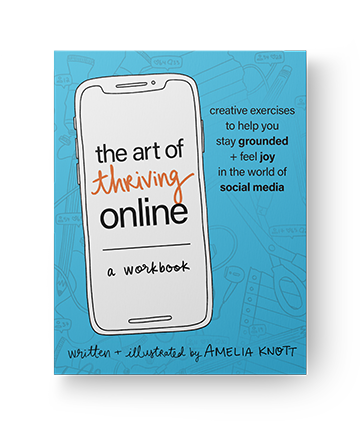
The Art of Thriving Online: A Workbook
Amazon | Barnes & Noble | Bookshop | Sounds True
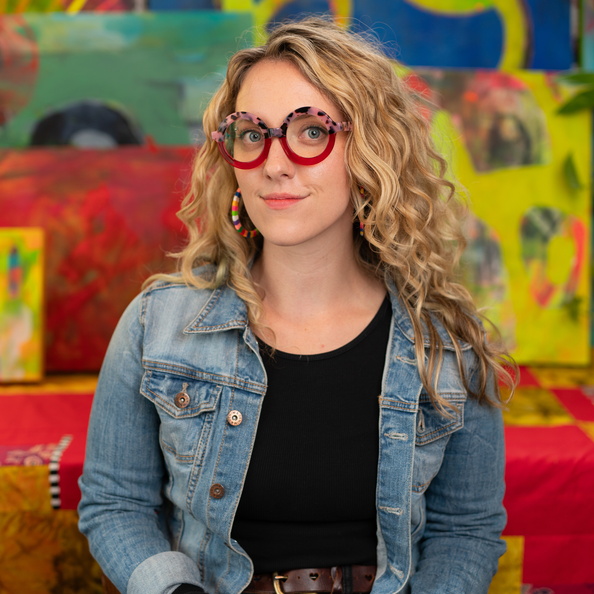
Amelia Knott
E16: When the Mind Becomes Disturbed
The mind, like the ocean, can be calm or disturbed, but the same consciousness is observing both states. Rather than trying to fix or overreact to a disturbed mind, one can learn to step back and observe the disturbance without feeding it. Ultimately, ceasing to thrash around in the disturbed mind allows the mental energies to settle down naturally. This process of letting go of the impulse to struggle leads to greater inner peace and spiritual growth over time.
For more information, go to michaelsingerpodcast.com.
© Sounds True Inc. Episodes: © 2024 Michael A. Singer. All Rights Reserved.
Customer Favorites
The Power of Emotions at Work
Karla McLaren is an award-winning author, social science researcher, and renowned expert in emotions and empathy. Her work focuses on her grand unified theory of emotions, which reconsiders how we think of “negative” emotions and opens new pathways into self-awareness, communication, and empathy. With Sounds True, Karla is the author of the landmark book The Language of Emotions, a book on The Art of Empathy, and a new book called The Power of Emotions at Work: Accessing the Vital Intelligence in Your Workplace. In this episode of Insights at the Edge, Tami Simon speaks with Karla about why the full range of emotions is necessary for us to bring forth our best thinking. They discuss the “toxic positivity bias” that has become the norm in the contemporary workplace, how this leads to widespread suffering and dysfunction, and how we can achieve an “emotionally well-regulated” workplace that works for all of us.
Winter Solstice: Rebirth of Light


At winter solstice, the darkest point of the year, light begins its journey of reemergence. This great cosmological rhythm sets our internal clocks, our biorhythms, to the subtle glow of slowly increasing light. In our spiritual and creative process, we begin our own gradual awakening and reemergence from the dark, fertile soil of winter.
This biological and spiritual attunement to light is what has made the many cosmological temples with their ritual periods of connection to the sun, so powerful through the ages.
Can you imagine the impact of the winter solstice less than a hundred years ago when we lived life primarily in natural light? At the nadir of the year, we were sustained by the living fire of candlelight and by bonfires when, in some places in the world such as Scandinavia, a day might consist of as much as twenty-three hours of darkness. And we were sustained by celebration—the twelve-day festival of yule and other rituals of its kind—in which we came together and made merry and honored the promise of the lengthening days ahead.
We have marked the all-important sadhya of winter solstice, the rebirth of the sun, with the literal birth of a son. Myths about the return of the sun king at this time of year have been recorded as far back as ancient Sumeria and Egypt. The birth of Christ and of the Lord of the Dance of the seasons re-erect an extraordinary diversity of winter solstice holidays that celebrate the rebirth of the light through the mirror of human birth. In fact, there are more cross-cultural celebrations at this point in the wheel of the year than at any other time—from Scotland to China, from Tibet to Antarctica—as we turn to one another for comfort, solace, and the shared joy that comes from bonding together to celebrate the return of the light.
Looking for more great reads?
Excerpted from Tending the Heart Fire by Shiva Rea.
 Shiva Rea, MA, is a pioneer in the evolution of vinyasa flow yoga. She founded Samudra Global School for Living Yoga based upon her worldwide travels and her studies in UCLA’s World Arts and Cultures program, as well as the roots of yoga in Tantra, Ayurveda, and dance. From transformative home practice videos to large-scale festivals, Shiva offers yoga as a universal pathway for self-realization and awakening positive change for all. For more visit shivarea.com.
Shiva Rea, MA, is a pioneer in the evolution of vinyasa flow yoga. She founded Samudra Global School for Living Yoga based upon her worldwide travels and her studies in UCLA’s World Arts and Cultures program, as well as the roots of yoga in Tantra, Ayurveda, and dance. From transformative home practice videos to large-scale festivals, Shiva offers yoga as a universal pathway for self-realization and awakening positive change for all. For more visit shivarea.com.
S3 E3: Navigating the Ocean of Life
Like a boat sailing on the sea, there are two significant forces guiding our journey through life: the natural forces all around us and the practical skills needed to reach our destinations. Here, Michael Singer explores the essentials for making our way on the spiritual path.
For more information, go to michaelsingerpodcast.com.
© Sounds True Inc. Episodes: © 2024 Michael A. Singer. All Rights Reserved.

